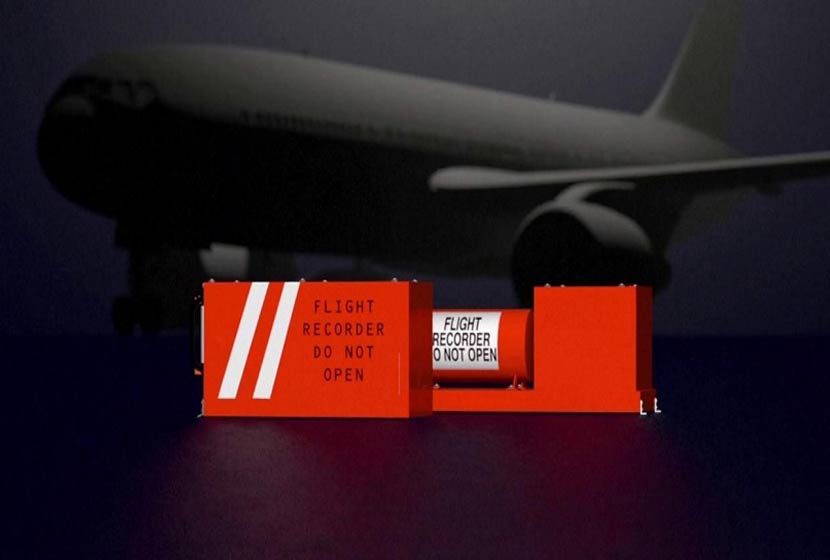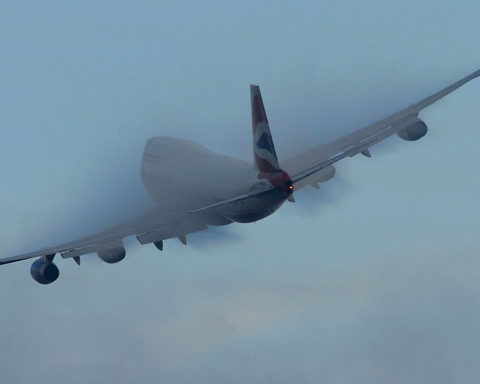Following a series of fatal accidents in the 1940s and 1960s, most states enacted laws requiring all companies to equip the cockpits of their aircraft with flight data recorders.
Fifty years after their invention, it is perhaps a similar revolution that the black boxes are about to experience. Indeed, the recent aircraft accidents that have shaken the news, in particular that of Malaysia Airlines flight MH 370, whose black boxes cannot be found, inevitably lead to a questioning of aviation security.
At a time when the development of connected objects is experiencing an unprecedented pace, how can they contribute to a more modern, faster and more accurate understanding of aviation security issues?
Guided trip to the heart of the cockpit
 A wide range of communication instruments are in service in today's airliners. Voice/radio transmissions, Flight Data Recorders (FDRs), Cockpit Voice Recorders (CVRs), altitude encoding transponders, Global Positioning Satellite Systems (GPS), Automatic Dependent Surveillance-Broadcasting (ADS-B), an on-board Maintenance Log Reporting System (ACARS), Satellite Communications (SATCOM) and now even 4G LTE cellular communications systems are available.
A wide range of communication instruments are in service in today's airliners. Voice/radio transmissions, Flight Data Recorders (FDRs), Cockpit Voice Recorders (CVRs), altitude encoding transponders, Global Positioning Satellite Systems (GPS), Automatic Dependent Surveillance-Broadcasting (ADS-B), an on-board Maintenance Log Reporting System (ACARS), Satellite Communications (SATCOM) and now even 4G LTE cellular communications systems are available.
Until the last decade, most of these systems have been implemented on board to increase safety and provide information on the current situation. But more recently, broadband satellite and 4G LTE systems have been introduced, mainly for passenger entertainment, and then used the additional bandwidth to increase efficiency and flight quality.
The Internet of Things for more powerful and reliable aircraft
 Engine manufacturers and major subsystem suppliers are driving the industry in the real-time monitoring field, and many of them have already deployed systems on board commercial aircraft. These systems consolidate new data with old data to build trends that can be used by operators. This connected system that integrates information from real-time sensors with other data is now known as the Internet of Things (IoT).
Engine manufacturers and major subsystem suppliers are driving the industry in the real-time monitoring field, and many of them have already deployed systems on board commercial aircraft. These systems consolidate new data with old data to build trends that can be used by operators. This connected system that integrates information from real-time sensors with other data is now known as the Internet of Things (IoT).
This IoT intelligence is capable of revealing failure trends for specific avionics systems, sets of systems or entire aircraft fleets, which can lead to immediate action or preparation of parts and maintenance, repair and overhaul (MRO) teams for greater aircraft availability.
This technique reduces downtime, increases service life and potentially minimizes major performance and maintenance issues. It's a win-win situation - airlines get better operational performance, with greater fuel efficiency, and aerospace system builders get valuable insights that enable them to create even more powerful and reliable systems for future implementation.
Here are some examples of information from the combination of old performance data and real-time data to evolve and improve the operation of airliners:
- Optimised fuel management to reduce the amount of fuel consumed.
- Optimized flight paths using performance-based navigation services to shorten flight routes, and in turn, reduce fuel and emissions and mitigate noise.
- Optimized airport traffic flow/sequence management, for better fleet synchronization and reduced ground-holding times.
- Flight statistics leading to the optimization of MRO activities.
The limits of current black boxes
 With today's IoT systems and the wide range of aircraft status communication capabilities (FDR, CVR, human voice/radio, transponders, GPS, ACARS, ADS-B, SATCOM and 4G LTE), it is difficult to understand why we don't know the reasons for the loss of an aircraft until the black box is recovered. The tragic losses of Air France flight 447 (AF447) and Malaysian Airlines flight 370 (MH370) demonstrate the need for more efficient collection and analysis of real-time flight data, as systems degradation occurs, and certainly well before the loss of an aircraft.
With today's IoT systems and the wide range of aircraft status communication capabilities (FDR, CVR, human voice/radio, transponders, GPS, ACARS, ADS-B, SATCOM and 4G LTE), it is difficult to understand why we don't know the reasons for the loss of an aircraft until the black box is recovered. The tragic losses of Air France flight 447 (AF447) and Malaysian Airlines flight 370 (MH370) demonstrate the need for more efficient collection and analysis of real-time flight data, as systems degradation occurs, and certainly well before the loss of an aircraft.
Black boxes are only valuable after a crash, only if the device can be found, and only if it is found within a reasonable time. Many black boxes from crashed aircraft are located in places where they are virtually impossible to locate and recover. The black boxes from United flight 389 (1965), Pan Am flight 816 (1973), and Eastern Airlines flight 980 (1985) have never been recovered.
Radio communications are only valid if the man expresses himself with perfect diction and speed. GPS is ideal for location data, but it still needs additional information, beyond that required by ADS-B, in order to truly act as a provider of business intelligence and real-time situational awareness. SATCOM and 4G LTE provide high bandwidth, but many airlines do not yet have these capabilities. Fewer still use broadband capabilities to relay information from sensors and the system platform for immediate analysis to optimize flight safety and operational performance.
We need to improve the transmission of civil flight information by using the proven IoT management model of real-time data collection/analysis from a wide range of sensors and through this intelligence, producing predictive statistics, not only to improve flight performance, but also to increase the safety and security of the flight to the point where the loss of an aircraft can be prevented. In the most extreme case, we will at least be able to understand the reasons for the loss of an aircraft and immediately start correcting problems in the air fleet, long before the black box of the accident is found. The recovery of black boxes simply does not reflect the vast amount of information available to us in today's aviation systems. Storing all vital information on board an aircraft is simply not intelligent. We need to increase the off-site storage of critical flight data on board (on site), where it can be retrieved in seconds.
For timely access to all aircraft data
 This is not a new technology: the underlying technology for a highly responsive and intelligent transfer system exists today. We are simply slow to adopt it. In the past, it has always been financially prudent for airlines to slow down the introduction of new security equipment. These are additional costs that generate little value in day-to-day operations and are only of interest in the rare event of the loss of an aircraft. IoT systems are different: the benefits of the investment are realized from the first flight and, with the growth of strategic intelligence, they increase with each flight.
This is not a new technology: the underlying technology for a highly responsive and intelligent transfer system exists today. We are simply slow to adopt it. In the past, it has always been financially prudent for airlines to slow down the introduction of new security equipment. These are additional costs that generate little value in day-to-day operations and are only of interest in the rare event of the loss of an aircraft. IoT systems are different: the benefits of the investment are realized from the first flight and, with the growth of strategic intelligence, they increase with each flight.
Currently, we have immediate access to real-time data from many aircraft sensors that can be instantly available worldwide. These measurement systems are already integrated into most modern avionics platforms, from flight decks to jet engines to mainstream mainframe computers. ACARS systems are designed to limit flight data transmissions to save limited bandwidth in the past, but recent broadband networks are now readily available. This new airborne broadband capability allows us to design systems based on in-depth situational awareness. At a minimum, we need to disseminate ACARS and black box data to off-site systems using this new broadband capability.
This increase in broadband capacity has not been carried out at the request of governments, either for security reasons or for better control of operations. It was obtained (and subsidized) at the instigation of passengers who wanted higher levels of in-flight connectivity. These passengers would willingly endure a degradation of bandwidth if the in-flight systems were required to send more data in the event of a flight system failure, when additional communication capacity is required. Most existing airborne IoT systems were initially introduced in aircraft to manage fuel and optimize the flight path. With this new extended flight paradigm, IoT sensors and analysis can also be used to increase flight safety and security.
Using IoT data to increase aircraft safety is strategic intelligence that simply cannot be done by pilots, ground crews or autonomous detection systems. Human-intervention systems are simply too slow to understand and respond to sensor measurements that reveal system degradation. The fusion of autonomous real-time sensors is the backbone of this IoT revolution, and immediate analysis, resulting in courses of action, will provide higher levels of quality, safety, serviceability and operational excellence with every flight.
This global intelligent connected network of airborne IoT systems will enrich the entire aerospace industry. It will be able to save lives by anticipating the loss of an aircraft in which the acquired intelligence is capable of correcting in-flight failures.
Conclusion
Are the black boxes obsolete? No, but the current evolution of the IoT field is a real opportunity to improve aviation safety and security without significant investment or adding size, weight, power (SWaP) capabilities to today's airlines.
The analysis of real-time in-flight IoT data allows us to optimize a wide range of positive business attributes using existing technology, infrastructure and assets. We can move beyond the singular, static black box environment into a new era of connected knowledge, relying on ground-based systems to improve situational awareness for pilots and crew. We can increase safety, survivability and operational performance without major new investments, just by changing the way we observe, manage and analyze our airborne environments.
Chip Downing
Chip Downing is senior business development manager for aerospace and defense at Wind River. A pioneer in the safety certification of commercial real-time operating systems, he has been involved in the embedded systems industry for more than 20 years.












